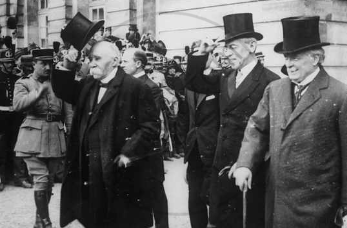Advertisements
Advertisements
प्रश्न
The War that broke out in 1914 was different from the previous wars in many ways. In this context discuss the following points briefly:
What was the territorial rearrangement of Europe as a result of this War?
उत्तर
The peace treaties signed after the First World War dramatically altered the political map of the world and of Europe in particular. Three ruling dynasties were destroyed – the Romanovs in Russia during the War itself, the Hohenzollern in Germany and the Hapsburg in Austria-Hungary. Soon after the war, the Ottoman Empire of Turkey ceased to exist. Austria and Hungary became separate independent States and so did Czechoslovakia and Yugoslavia. Multicultural and multiethnic empires came to an end and in their place largely culturally and ethnically homogenous nation-states emerged. These included Finland, Estonia, Latvia, Lithuania and Yugoslavia. Alsace and Lorraine were restored to France and Schleswig-Holstein were restored to Denmark.
APPEARS IN
संबंधित प्रश्न
The 1914 and 1939 Wars that engulfed almost the entire world were known as World Wars due to its unprecedented impact and dimension. In this context, answer the following:
Mention any four terms of the treaty of Versailles which affected Germany after World War I.
The War that broke out in 1914 was different from the previous wars in many ways. In this context discuss the following points briefly:
How did the treaty of Versailles seek to cripple Germany’s military strength?
Why was the League of Nations established?
How many soldiers were killed in First World War?
What were the objectives of the League of Nations? Name the organisation formed in October 1945 with objectives similar to those of the League of Nations.
Explain how First World War brought about a changed political scenario of the world.
Answer the following:
(i) Name the three gentlemen in the picture.
(ii) With which settlement they were associated.
The Treaty of Versailles based on which motive:
One major result of the first World War was the end of ______.
|
The final act of the long-drawn-out negotiations took place at Versailles on Saturday afternoon and to-day Germany and the Allies - always with the exception of America - are at peace. Peace is a blessed word and both the word and the fact are welcome to-day. So far as Germany is concerned, there is for the present, an end of strife and at least a formal return to the decent relations of civilised states. Editorial: Peace in force (12 January 1920) The Guardian |
Name the organization which was established in 1920 to maintain peace after this war.
